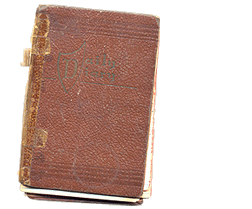
Dot's Diary, Jan. 14, 1946:
New Edition of Cookbook Is Available: “Mexican Cookbook,” by Erna Fergusson, published by the University of New Mexico Press, is a new edition of a book which was out of print and came back by special demand. Many lovers of Mexican food want to know how to prepare it authentically in their own kitchens. ---Chicago Tribune
Author Erna Fergusson, by virtue of her popular cookbook, helped to make enchiladas, tacos and tortillas less exotic and much more common on Americans' dinner tables. Fergusson--who grew up in New Mexico--was more than a book author though:
Throughout her years Erna had various other occupations. During World War II she took a job with the Red Cross as the home service secretary and State Supervisor for New Mexico. After the war she became a reporter for the Albuquerque Herald, writing various articles regarding her hometown. She was commissioned in 1926 by Century Magazine to write “Redskins to Railroads” and “From Rodeo to Rotary” two of her pieces, which many years later along with other short works became published.
While at the Herald, Erna also began a touring company alongside friend Ethel Hickey. The touring company, Koshare Tours, provided guests with tours of the southwest, introducing them to native cultures. Koshare Tours were so successful that Fred Harvey, a famous and well to do western hotel and restaurateur, bought the touring company and hired Erna Fergusson to direct the new endeavor—Indian Detour Service.
In her 1934 book, "Mexican Cookbook", Fergusson was perhaps the first to correct the English-speakers notion that "frijoles refritos" meant "refried beans", but the correction never reached the popular consciousness.
Erna Fergusson can be best depicted as a New Mexico writer of the 1930s, honing the two techniques of oral interview and conversational prose style; she was a part of the Southwestern Renaissance, and greatly contributed to the history of New Mexico.
Amazon carries Fergusson's book, in used form. Although I'm no chef, I'm thinking of ordering it. I'll let you know the outcome, if I do. From their review:
This popular cookbook has sold more copies than any other native cookbook ever printed in the Southwest. First published in 1934, it contains recipes for the foods that are now served in trendy restaurants nationwide, enchiladas, chile rellenos, and carne adovada. But the heart of this cookbook consists of simple, rustic food served in New Mexican homes, green chile sandwiches, a lamb-based cold soup, and sweet rice. Techniques for preparing freshly grown food, while unnecessary thanks to modern supermarkets, bring back the ambience and spirit of territorial New Mexico.











